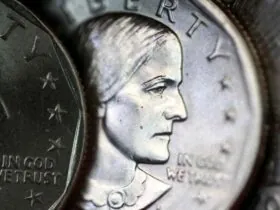For coin collectors, the value of a coin often extends far beyond its face value. Rare coins, with unique characteristics or historical significance, can fetch remarkable prices at auctions. The 1910s, a decade marked by major political and social change in the United States, also witnessed the creation of some of the most valuable coins in American numismatic history. Below are three standout coins from this era, each with its own intriguing story and exceptional worth.
1. 1913 Liberty Head Nickel: A Coin Shrouded in Mystery
This Article Includes

The 1913 Liberty Head Nickel is one of the most famous and valuable coins in existence. Only five of these nickels were ever minted, and the exact origins of the coin remain unclear. It is believed that a mint employee named Samuel W. Brown may have secretly struck these coins, adding to their mystique and intrigue.
The rarity of the 1913 Liberty Head Nickel, combined with its historical context, makes it a highly sought-after collector’s item. In January 2014, one of these rare nickels was sold at auction for a staggering $3,290,000, setting a world record. The high price reflects not only the scarcity of the coin but also its unique place in numismatic history.
2. 1916 Doubled Die Obverse Buffalo Nickel: A Minting Error with Value

Minting errors can sometimes turn an ordinary coin into a valuable asset, and the 1916 Doubled Die Obverse Buffalo Nickel is a prime example. “Doubled die” refers to a mistake made during the minting process when the design appears twice, creating a doubled image. In the case of the 1916 Buffalo Nickel, this error is most noticeable in the date on the obverse (front) of the coin.
Not all 1916 Buffalo Nickels feature this doubled die error, and the value of the coin varies depending on its condition and the extent of the doubling. The coin’s rarity and the quality of the minting process make it highly coveted among collectors. The highest auction price for a 1916 Doubled Die Obverse Buffalo Nickel is $281,750, highlighting its worth in the world of rare coins.
3. 1919-D Full Bands Mercury Dime: Precision in Minting

The 1919-D Full Bands Mercury Dime is another example of a coin whose value lies in the finer details. The “full bands” refer to the vertical bands on the torch depicted on the reverse side of the coin. In most 1919 Mercury Dimes, these bands are softly blended or poorly struck, making coins with sharp, distinct bands exceedingly rare.
The presence of full bands on the 1919-D Mercury Dime is an indicator of the precision in the minting process, which was not common during this period. Because most 1919 dimes were “poorly struck,” finding one in excellent condition is a rare occurrence. As a result, these coins are highly sought after by collectors, and the highest price for a 1919-D Full Bands Mercury Dime at auction reached $156,000.
Conclusion: The Lasting Value of 1910s Coins
The 1910s was a transformative decade in American history, and the coins minted during this time are no less significant. Coins like the 1913 Liberty Head Nickel, the 1916 Doubled Die Obverse Buffalo Nickel, and the 1919-D Full Bands Mercury Dime represent both the era’s craftsmanship and the unexpected impact of minting errors. These rare coins not only provide a fascinating glimpse into the past but also serve as valuable assets for collectors, with prices that can reach hundreds of thousands of dollars. Whether due to their historical context, unique features, or minting errors, these coins from the 1910s continue to captivate the numismatic world.
Also Read:
THIS IS ONLY A BLOG POST FOR INFORMATION – WE DO NOT BUY, SELL, OR APPRAISE THESE ITEMS







Leave a Reply